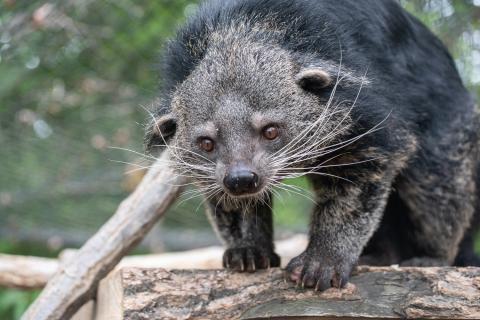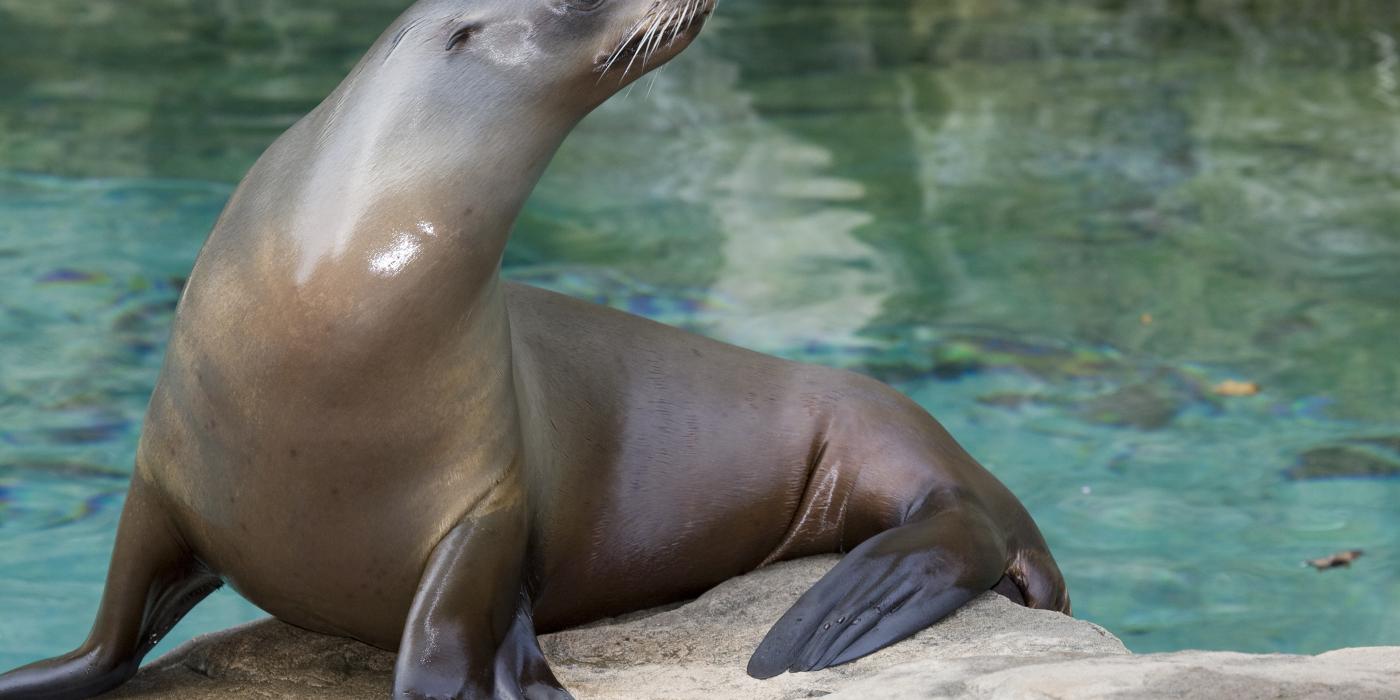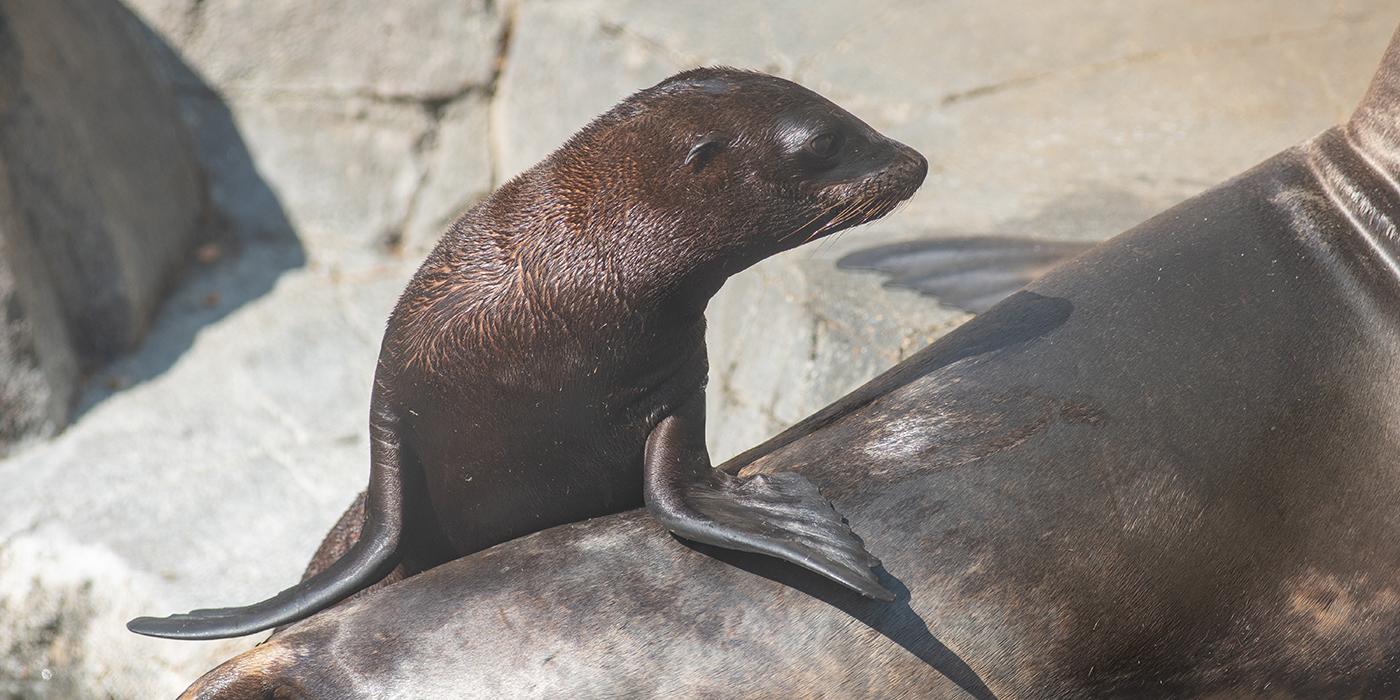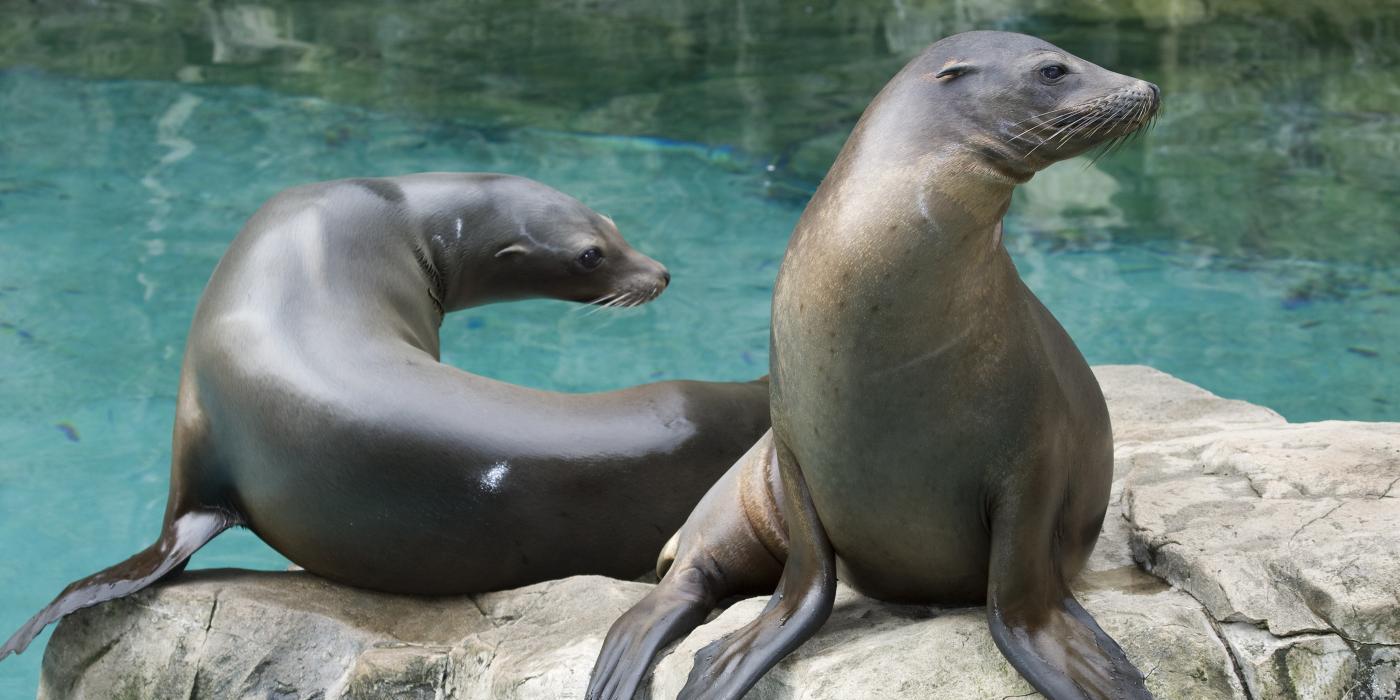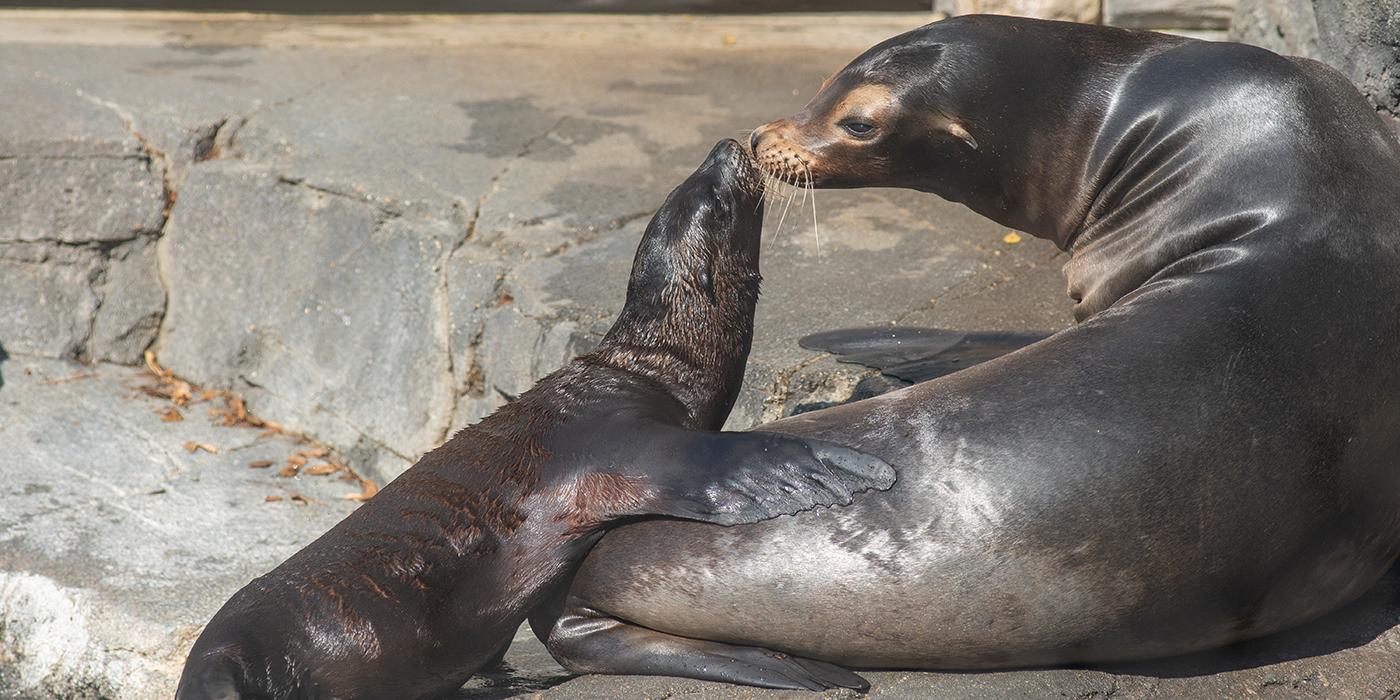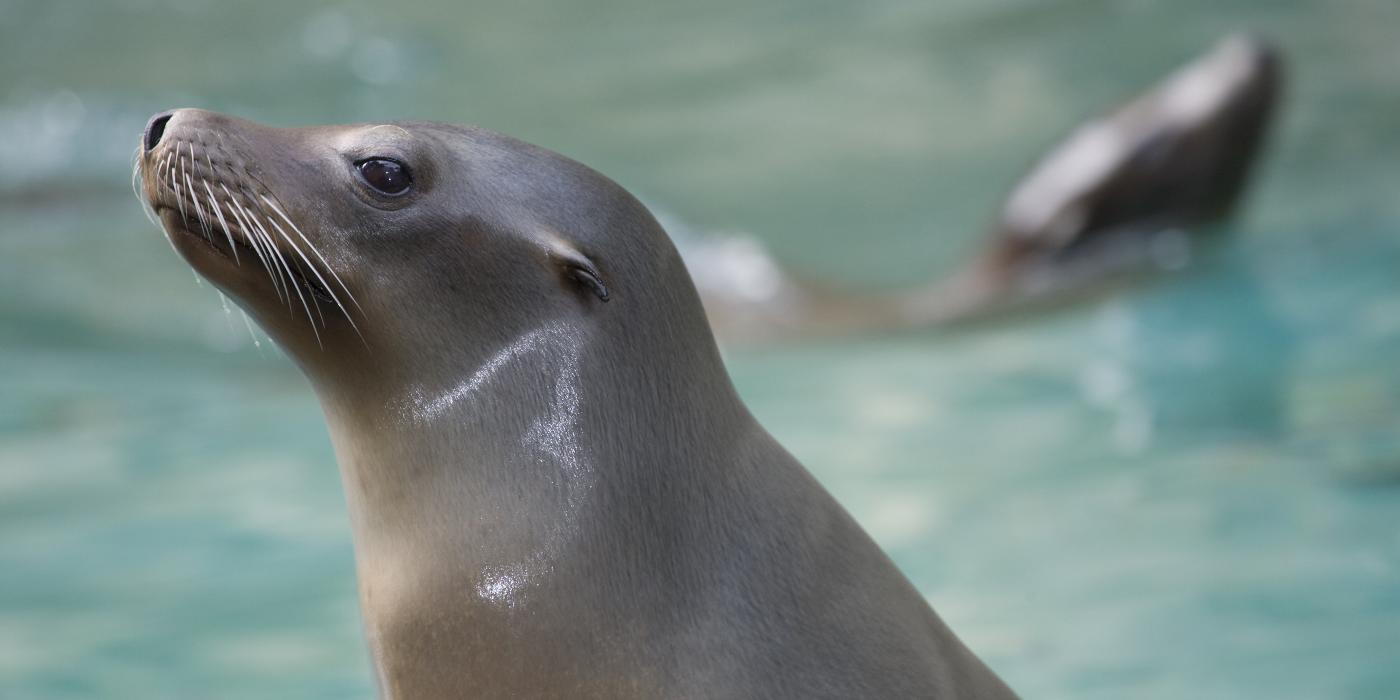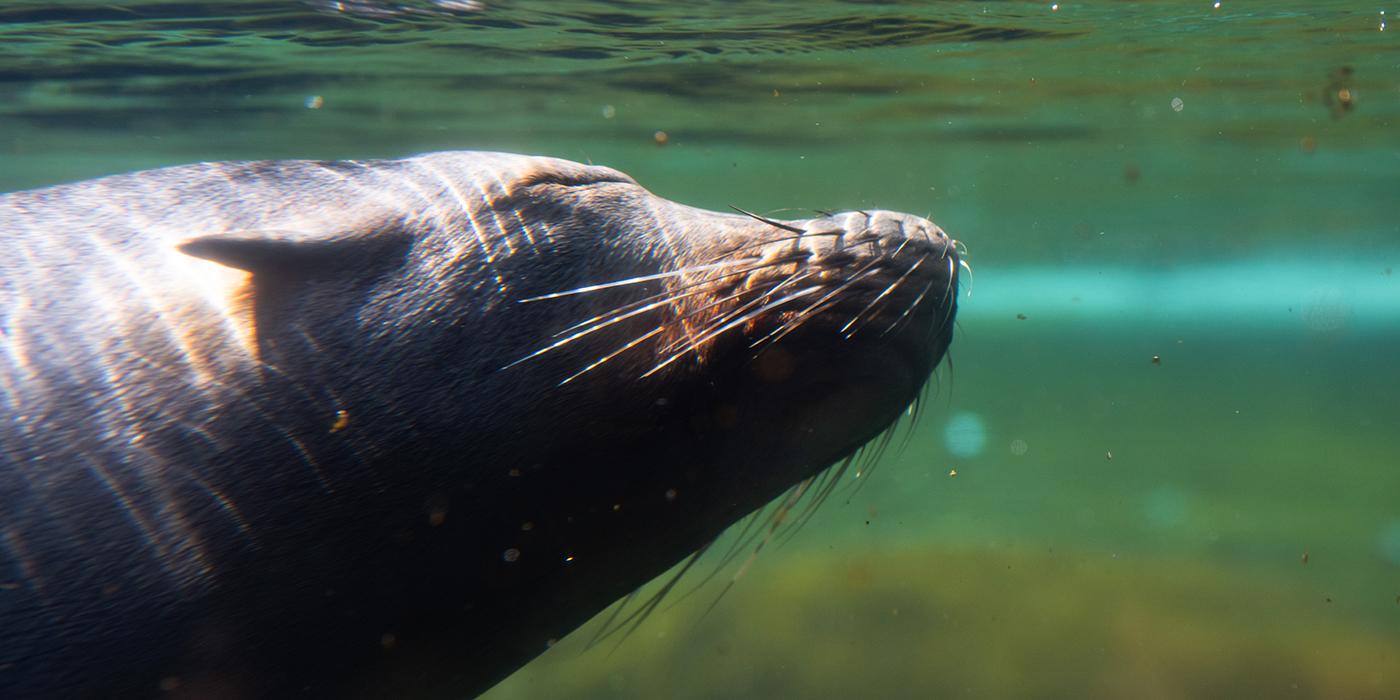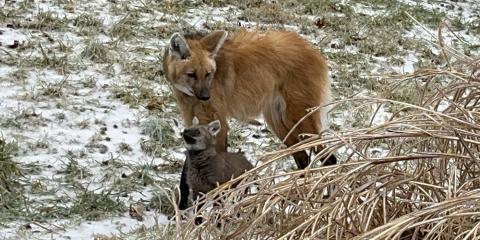Physical Description
Sea lions, along with fur seals, are considered eared seals. Their visible ear flaps distinguish them from true seals. They also use their fore flippers to propel themselves through the water, whereas true seals rely primarily on their back flippers to swim.
Males are generally a dark chestnut brown, although some males have lighter coloring on their head, muzzle, sides, hind and belly. Females and juveniles are usually tan. Both sexes have a sleek, single hair coat, which also distinguishes them from true seals.
At about 5 years old, males develop a noticeable crest that runs lengthwise along the top of their skull creating a high, domed forehead. The fur on this crest usually becomes increasingly lighter as a sea lion ages.
California sea lions lack the "mane" that gives sea lions their name. They also have a more slender neck than some species and a dog-like head.
California sea lions have many adaptations for their aquatic lifestyle. Their limbs are short with elongated digits encased in cartilage and connective tissue to form flippers. They have strong, bulky shoulders and their streamlined, torpedo-shaped bodies taper to the tail.
Their front flippers are especially long and are used for propelling them through the water. Their back flippers are used as rudders and have three claws for grooming.
On land, these sea lions move by rotating their rear flippers under their bodies and supporting their body weight on all four flippers. Although California sea lions appear clumsy when moving on land, their movement through the water appears almost effortless.
The flexibility of their bodies allows them to make tight, twisting turns as they play or pursue fish, and they can quickly reach speeds of 25-30 mph (40-48 kph) while hunting, avoiding predators or simply playing.
A layer of blubber, or fat, insulates the sea lion's body, and the circulatory system can shunt the blood supply to the extremities and outer surface of the body. Meanwhile, a layer of fur traps water next to the skin and warms it to body temperature. The California sea lion's small body surface in proportion to its volume also reduces the amount of heat lost to its surroundings.
Overheating can often be a problem for California sea lions, and they use behavioral means to cool off, such as resting with a flipper in the water, flipping sand over their back or flipper fanning in the water.
These predators have excellent senses. Their eyesight is well developed, because they spend a lot of time underwater with reduced light levels. At the surface, where there is brightness and glare, the sea lion's pupil can contract to a tiny pinhole, protecting its sensitive retinas.
Though the sea lion's ear flaps are small, it can hear quite well both above and below the surface. Its ears are also valvular and close underwater. Sea lions often vocalize underwater and are able to easily locate sound sources.
Their sensitive whiskers, called vibrissae, can rotate forward and detect the slight movements of fish swimming nearby, enabling California sea lions to find and capture prey in total darkness.
California sea lions seem to have an acute sense of smell. Their nostrils are closed at rest and have to be opened to take a breath.
Size
Adult males are about 8 feet (2.4 meters) long from nose to tail and weigh an average of 600 pounds (272 kilograms). In preparation for the breeding season, their weight often increases up to 1,000 pounds (454 kilograms).
Adult females are significantly smaller and slimmer than males. They are about 6 feet (1.8 meters) long and weigh an average of 220 pounds (100 kilograms).
Native Habitat
The three species of California sea lion are divided by geographical divisions — the Pacific coast, the Gulf of California and the Galapagos Islands. These sea lions are currently found in the eastern North Pacific from British Columbia to Baja California, the Gulf of California, and in a separate population on the Galapagos Islands.
The population in Japan is now considered extinct. The U.S. population of California sea lions is estimated at 210,000. Population estimates in other areas are considered unreliable.
California sea lions are not typically found more than 10 miles (16 kilometers) from the Pacific coastline. They usually congregate on islands and remote shorelines when not in the ocean. Many have habituated to human presence and haul out on manmade structures, such as piers and buoys.
Lifespan
California sea lions live 15 to 20 years in the wild and average 25 to 30 years in human care.
Communication
As social animals, California sea lions spend much time communicating with each other. From alarm barks and growls to bleats and roars, California sea lions are one of the noisiest pinniped species. They have numerous vocalizations used not only on land but underwater as well.
Males typically patrol their aquatic and terrestrial territories and bark or roar to warn intruders away — sometimes even barking underwater. During these patrols, they display to other males in the vicinity. These behaviors are vital to maintaining a territory and include barking, head shaking, oblique stares and lunges at the opponent's flippers.
Females use specific calls to identify their pups. Following birth, the cow and pup spend time nuzzling and vocalizing to each other. This process imprints on their memories exactly what one another smells and sounds like. While the calf is still nursing, the cow alternates between feeding her pup and hunting for food. When a cow enters the water to hunt, her pup joins with other pups in the pod.
Once back from her feeding trip, the mother calls her offspring using a pup attraction call and the pup answers with its own unique bleat. The mother then confirms her pup by smell, leads it to a sheltered spot and nurses it.
Visual signals are an important part of sea lion nonvocal communication. Whiskers are used for greeting one another and, in conjunction with smell, allow bulls to determine the sexual receptivity of cows. Bulls produce strong smells when in rut, presumably important in breeding behavior.
Food/Eating Habits
California sea lions are carnivores. They are generalist feeders, eating herring, rockfish, anchovies and other fish, krill, and invertebrates, such as squid and octopus. They typically feed toward the top of the water column but can dive as deep as 1,000 feet if necessary.
At the Smithsonian's National Zoo, they eat thawed frozen squid, capelin, herring, butterfish and mackerel. They also get vitamin supplements daily to replace any nutrients lost in the food during the freezing process.
Social Structure
California sea lions are gregarious, social animals and gather during the breeding season, preferring sandy beaches for their rookeries. Females gather on the rookeries where they are sociable and noisy but relatively indifferent to the males until they are ready to mate.
Males are polygamous, mating with more than one female, and maintain territories during the breeding season of May to August, with territorial behavior peaking in late June and early July.
Most territories include access to the water's edge and often extend into the water, allowing bulls a chance to cool off. Bulls patrol their territories, barking incessantly to advertise their presence and using formalized movements to mark boundaries.
For bulls, bigger is better; they spend months gaining weight. A large amount of blubber provides extra insulation and nutrition, helping them to remain in control of their territory. Large size can be threatening to a would-be competitor and an advantage in combat. If necessary, bulls fight to defend their territories. These battles can be so intense that pups are sometimes trampled to death in the chaos.
Reproduction and Development
California sea lion females are receptive to mating about three weeks after giving birth to a calf. Male California sea lions hold their territories for an average of 27 days, making it counterproductive to establish territories before the females arrive. They do not set up well-defined territories until after the first pups are born.
Females give birth to a single pup and are protective of them for several days, moving the pups around with them. Females then begin to leave their pups for increasing lengths of time. Within two weeks, females come into estrus and solicit attention from bulls.
After copulation, the fertilized egg develops into a blastocyst, remaining dormant for several months before attaching to the uterine wall. This delayed implantation ensures that birthing occurs at the right time each year. Pups are about 2.5 feet (75 centimeters) long, nose to tail tip, and weigh about 18 pounds (8 kilograms) at birth. They are chestnut brown in color.
Young pups suckle at frequent intervals throughout the day, but by 3 weeks old are left alone for increasing amounts of time. Pups gather in groups, called colonies, and spend their time resting, exploring the rookery or playing in tide pools. They nurse anywhere from six months to a year, until the arrival of the next pup. Females reach sexual maturity at 4 or 5 years and males at 5 to 6 years in human care.
Conservation Efforts
California sea lions' natural predators are sharks and orcas, or killer whales. Disease, parasites and the weather system El Nino also take their toll. California sea lions are protected under the Marine Mammal Protection Act, which makes it illegal to harm them. Still, some are killed each year by fishermen who regard the animals as competition and a threat to their livelihood. In 2003, the California sea lion population size was estimated at 237,000 to 244,000.
Entanglement in and ingestion of plastics in the ocean is another serious threat to these animals. Habitat destruction, pollution and diminished food supply through overfishing are hazards faced by marine life in general. Toxic algae blooms fed by agricultural run-off and other pollution can lead to the poisoning of marine mammals by a chemical called domoic acid, which can cause brain damage.
Water quality is vital to a sea lion's well being, as blubber can hold pollutants. Many studies show concentrations of pollutants such as DDT and PCBs incorporated within the bodies of fur seals and sea lions. The levels of these toxins increases with age in males but drops sharply after maturity in females. This suggests the transfer of these pollutants during lactation to offspring.
Help this Species
- Organize or attend a stream, river, lake or other waterway cleanup in your area to preserve aquatic habitats for local species.
- Avoid single-use plastics, such as plastic bottles, bags and utensils. Choosing reusable options instead can help reduce plastic pollution.
- Try fundraising for conservation organizations in new and fun ways. You could donate your birthday to conservation, host a bakesale to benefit wildlife or Adopt a Species!
- Protect local waterways by using fewer pesticides when caring for your garden or lawn. Using fertilizers sparingly, keeping storm drains free of litter and picking up after your pet can also improve watershed health.
Animal News
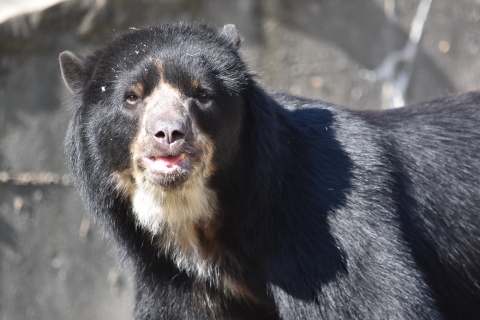
How Are Animal Matches Made at the Zoo?
